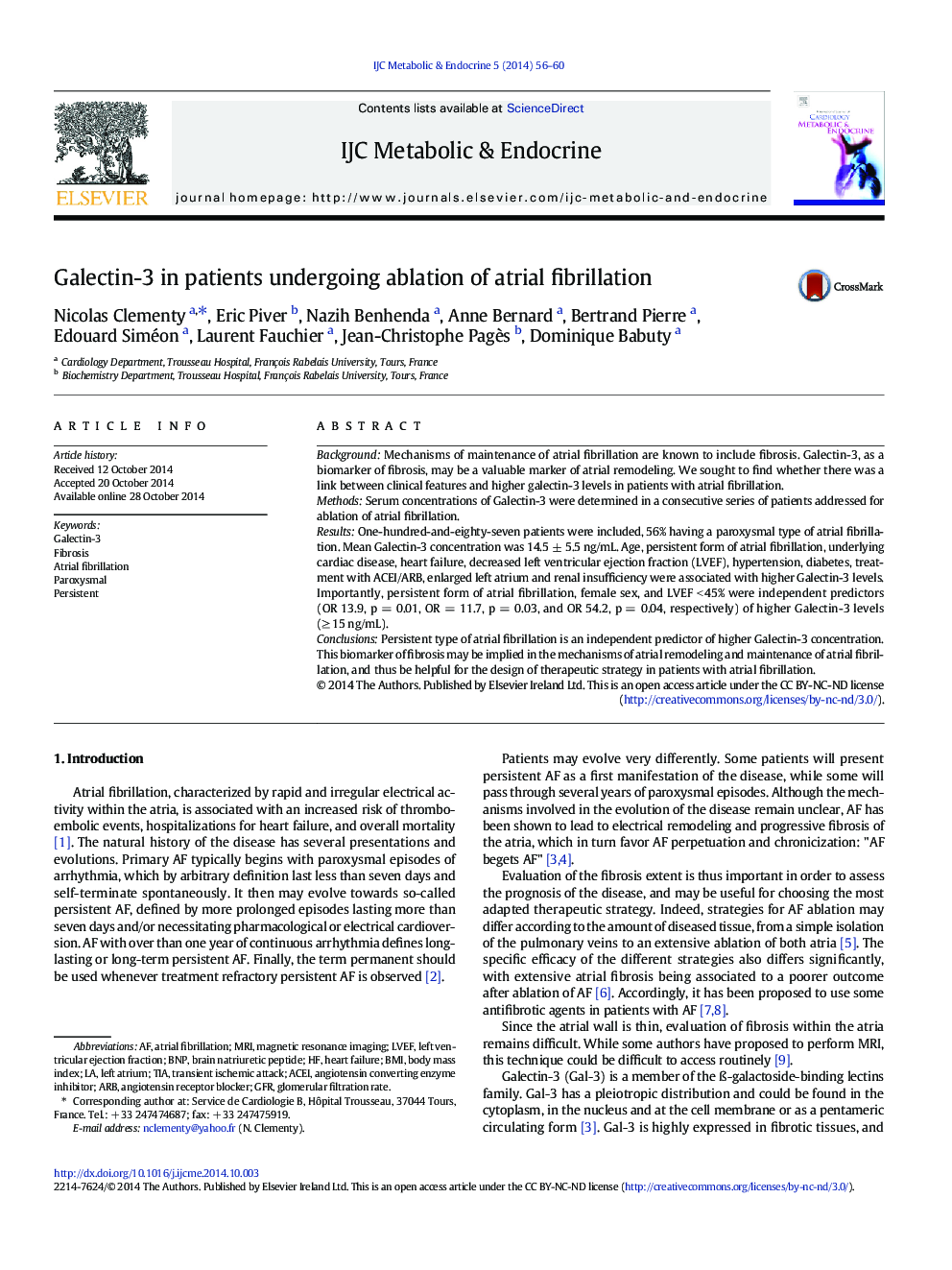| Article ID | Journal | Published Year | Pages | File Type |
|---|---|---|---|---|
| 2927269 | IJC Metabolic & Endocrine | 2014 | 5 Pages |
•Galectin-3 is a biomarker of fibrosis.•Fibrosis is implied in atrial fibrillation initiation and maintenance.•Galectin-3 was measured in 187 patients referred for atrial fibrillation ablation.•Galectin-3 levels were found to be higher in persistent atrial fibrillation and in patients with cardiovascular risk factors.•Galectin-3 might be helpful in the therapeutic strategy of patients with atrial fibrillation.
BackgroundMechanisms of maintenance of atrial fibrillation are known to include fibrosis. Galectin-3, as a biomarker of fibrosis, may be a valuable marker of atrial remodeling. We sought to find whether there was a link between clinical features and higher galectin-3 levels in patients with atrial fibrillation.MethodsSerum concentrations of Galectin-3 were determined in a consecutive series of patients addressed for ablation of atrial fibrillation.ResultsOne-hundred-and-eighty-seven patients were included, 56% having a paroxysmal type of atrial fibrillation. Mean Galectin-3 concentration was 14.5 ± 5.5 ng/mL. Age, persistent form of atrial fibrillation, underlying cardiac disease, heart failure, decreased left ventricular ejection fraction (LVEF), hypertension, diabetes, treatment with ACEI/ARB, enlarged left atrium and renal insufficiency were associated with higher Galectin-3 levels. Importantly, persistent form of atrial fibrillation, female sex, and LVEF < 45% were independent predictors (OR 13.9, p = 0.01, OR = 11.7, p = 0.03, and OR 54.2, p = 0.04, respectively) of higher Galectin-3 levels (≥ 15 ng/mL).ConclusionsPersistent type of atrial fibrillation is an independent predictor of higher Galectin-3 concentration. This biomarker of fibrosis may be implied in the mechanisms of atrial remodeling and maintenance of atrial fibrillation, and thus be helpful for the design of therapeutic strategy in patients with atrial fibrillation.
